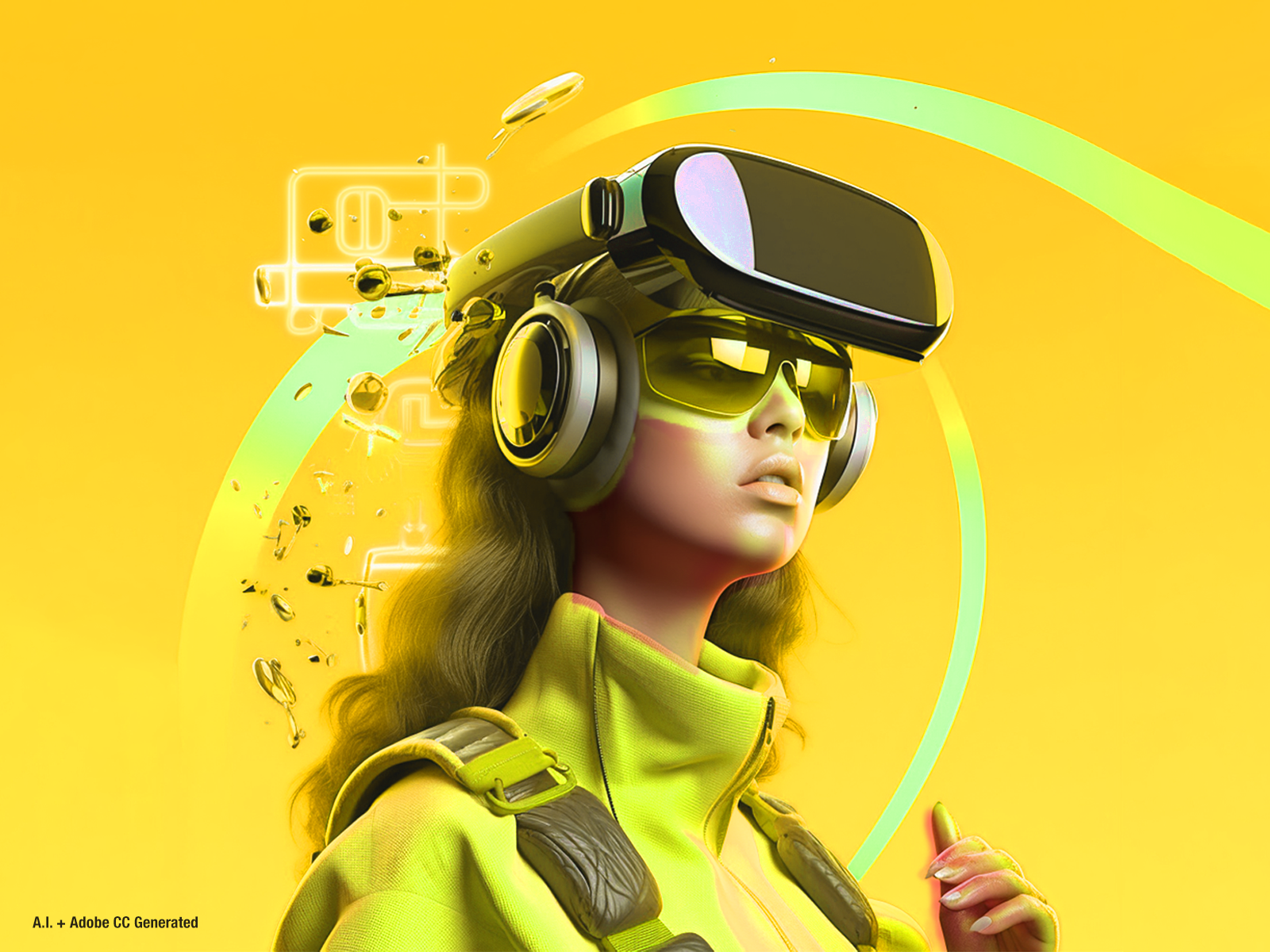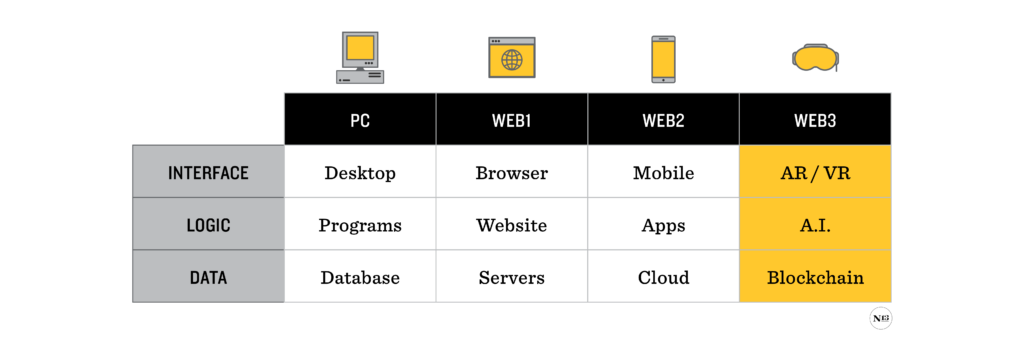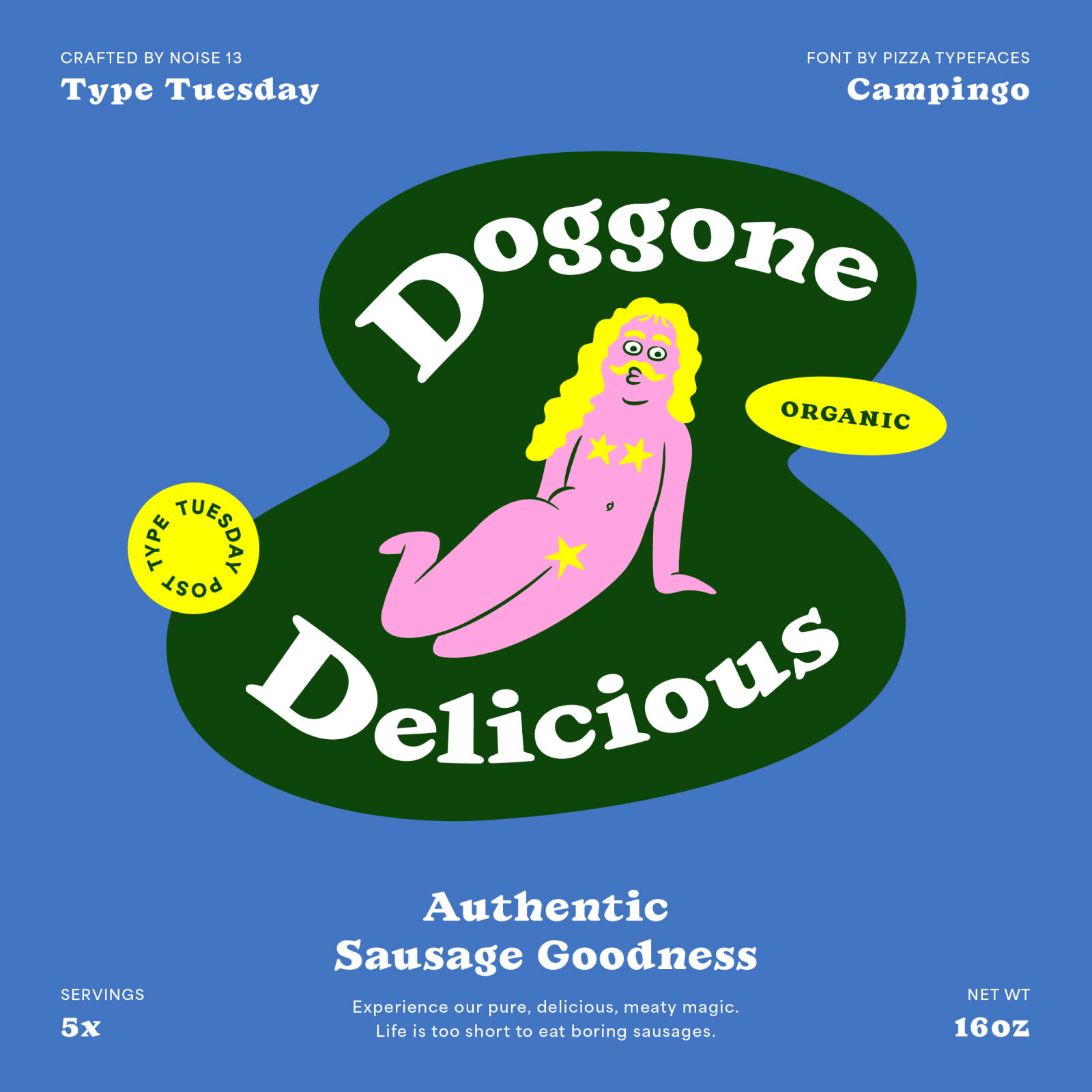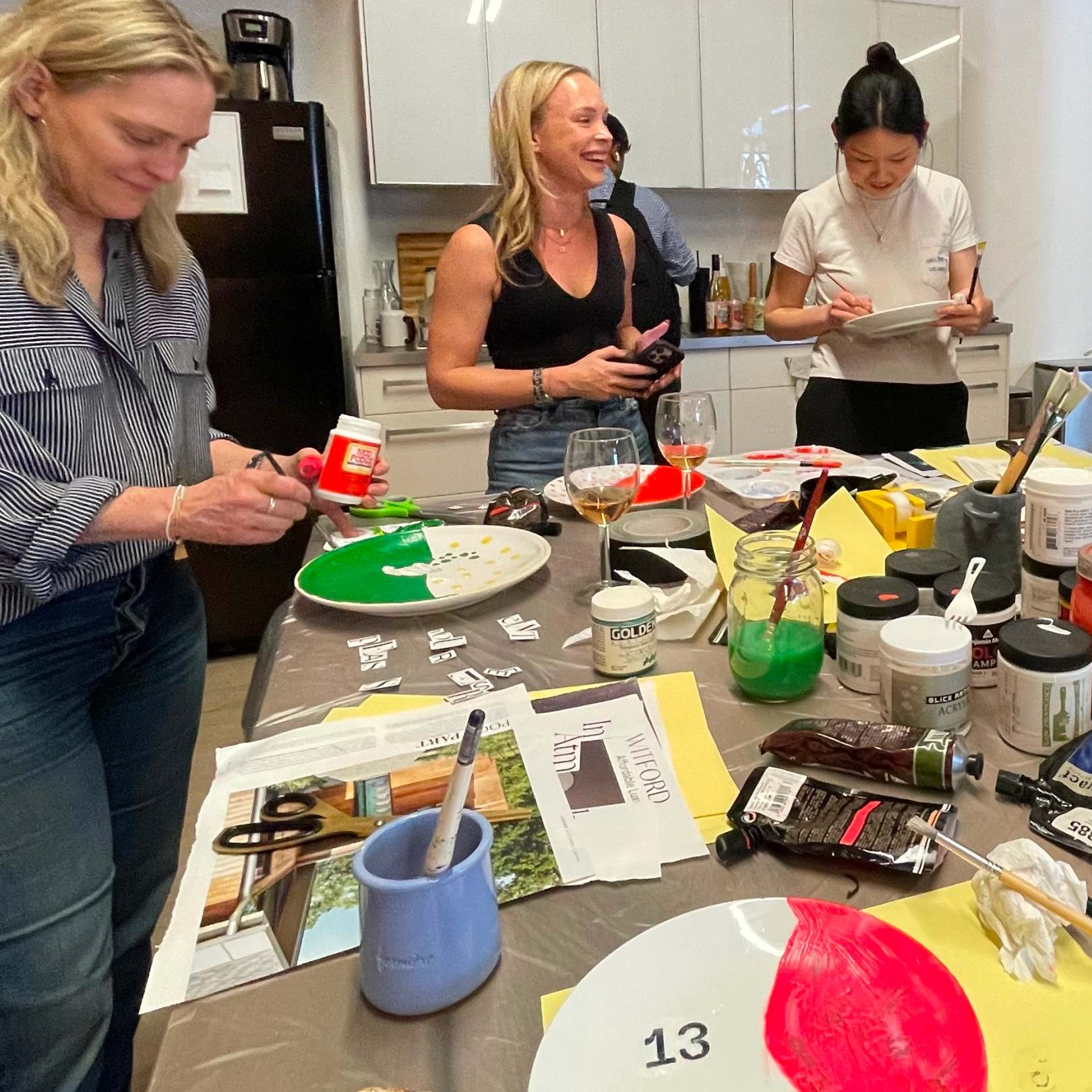A.I. is just a piece of the pie, Web3 is the big picture

The past year has been a rollercoaster of new tech, with each part of Web3 coming into the cultural zeitgeist. It can be overwhelming and intimidating to creatives, but we should be focused on harnessing this technology for good and use it to make our work stronger.
Web3 is the next phase of the internet that uses AI, machine learning, and decentralized systems to create a more intelligent, connected, and decentralized network. Its aim is to connect information in a way that enables machines to understand and process data in a more meaningful way, leading to a more personalized and autonomous web. There are 3 pieces on the evolution of computing, the interface, the logic and the data. For Web3 those pieces are AR/VR, A.I, and the Blockchain. Two out of the 3 pieces of it have had their rise and fall in the eyes of the public, but A.I. will help resurrect them if done right. The blockchain and Augmented and Virtual Reality(AR/VR) are integral parts of Web3 just like its recent predecessors, Mobile & the Cloud were to Apps. As creatives we should help define this messaging and prepare for it. And we must understand these pieces properly in order to avoid falling for get rich quick schemes that obscure their potential.
Let’s get things in perspective by comparing Web3 to previously known Web2 pieces one to one. In Web2, “Mobile first” became the standard of the design world, and AR/VR were the new frontier. We’ve seen how Meta tried to jump into the Metaverse and VR early, but most people don’t realize that AR has been around for a while now with Snapchat & Tiktok filters. We just don’t have a portable device like the iphone in order to launch it into the cultural zeitgeist yet, but Apple is working on fixing that next year. Then we’ll be off to the races trying to relearn, or evolve our systems in order to design for this new medium. What does an “AR first” system look like, and what are the standards when you have to balance the noise of the real world with a digital interface? These are questions that myself and other designers have been trying to answer for ages, even during the “Google Glass era”. They’re tricky and just like the “mobile first” design systems we’ll have to learn and evolve as users adapt to the new medium.
You’re probably here because A.I. was in the title of this blog, think of what it provides to us as the same as Apps did in Web2, a new form of communication and visual language. Our job as creatives is to use it as a tool in order to develop better brand systems, communications and experiences. A.I. is just the logic behind web3, just like apps, websites, and programs were in the past. And yes, A.I. will be the future. But we’re still in the wild west phase like the first gen Apps on smartphones. How that develops has to do with our industry as a whole learning to understand it. There’s so much that has been written about A.I. but if you dive deeply into it, most is either speculative or a “we won’t take your job, trust me” sales pitch that regurgitates the same information. Should we be afraid? Yes. Should it paralyze us? No. Do we need to help guide what we want out of it? Absolutely. I hope the A.I. tools inspire us to a better work-life balance & creativity.
The last piece of Web3 is the blockchain, scary at times, confusing to all, and definitely most important. Not because of NFTs or Crypto but because it can completely change social media and how we control our own data. Think of blockchain as a digital ledger, a decentralized and immutable record that captures every transaction, idea, or piece of content. It’s like a giant canvas, open to all, yet secure and tamper-proof. Each creative contribution, whether it’s a piece of music, a piece of art, or a piece of writing, becomes a block, woven into the fabric of the blockchain. With it, imagine a social media platform that puts you in control of your own data. Instead of your personal information being harvested and sold without your proper consent, it allows you to securely store and manage your data, granting you the power to choose what information you share and with whom. It introduces a new era of privacy, where you can engage on social media without sacrificing your personal information. You can imagine how disruptive that can be to companies that make their profit from information sharing, some of that fear is being directed towards A.I., as it was with crypto and NFTs. It’s super inspiring thinking about what creatives can come up with when this tech is in our hands (Something I’ve studied & worked on for over a decade, including an MFA thesis, A.I. branding and analysis reports on the topic.)
I like to believe in a future where these tools will be used for good. Web2 with all its flaws, brought more collaboration, connectivity between teams, access to information, and flexibility in work and personal life. In a future where Web3 will bring more privacy, ownership of your data, vast creative output in a shorter amount of time, and give people new amazing digital experiences away from a laptop/computer, we need to keep in mind the past compromises we allowed in Web2’s creation. We need to jump in and help create a Web3 with better safeguards, privacy, and equity for all. It’s our responsibility to not only imagine its possibilities but advocate for safeguards and regulations, as well as share the benefits with our clients and partners, creating a better future where the whole pie benefits us all.
Keep posted for a more detailed conversation about each piece of Web3 as we take a dive into not only A.I. but the vast possibilities of this new system.






